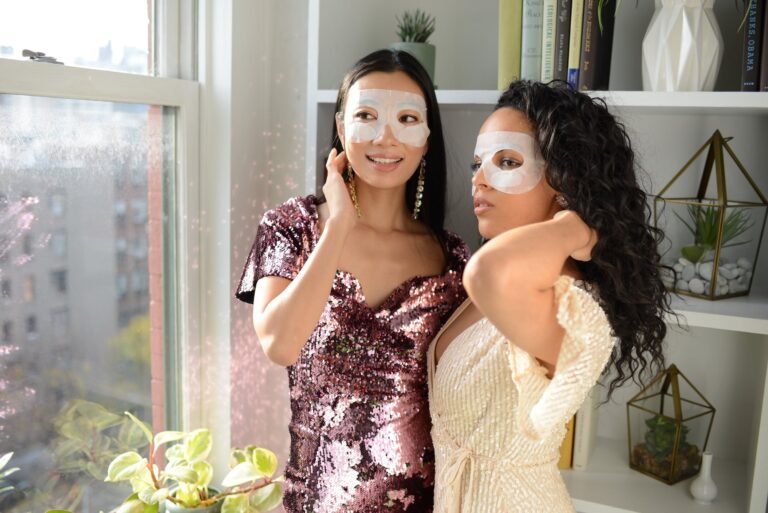When it comes to maintaining healthy, glowing skin, simplicity is often the key. At the heart of any complete skincare routine are a few basic but necessary steps: cleansing, exfoliating, moisturizing and protecting. Each of these steps plays a key role in supporting your skin’s health and keeping it looking its best – regardless of your skin type. Let’s break down why each one is so important and how you can tailor it to your unique skincare needs.
Cleansing: The foundation of healthy skin
Cleansing is the first and most fundamental step of any skin care routine. Your skin deals with countless impurities throughout the day—pollution, dirt, oil, and makeup—that, if left unchecked, can clog your pores and lead to breakouts, dullness, and irritation. Cleansing removes these impurities, giving your skin a fresh start and allowing the other products in your routine to penetrate more effectively.
For oily skin types, I recommend using a gentle foaming or gel cleanser that helps balance oil production without stripping the skin. For drier skin, a cream or oil-based cleanser can nourish while removing dirt and debris. Sensitive skin types should look for fragrance-free, soothing cleansers that protect the skin barrier, while normal skin can benefit from almost any formulation.
The key here is consistency. Cleansing your skin morning and night ensures you keep it clean and healthy, setting the stage for the rest of your routine.
Exfoliation: The secret to glowing skin
Exfoliation is an often-overlooked step, but it’s essential for all skin types. By gently removing dead skin cells, exfoliation reveals fresh, glowing skin underneath and helps prevent clogged pores that can lead to breakouts. It also stimulates collagen production, which keeps your skin firm and youthful.
That said, exfoliating too much can be harmful. Depending on your skin type, exfoliation should be done two to three times a week. For those with sensitive or dry skin, a gentle exfoliator—like mine Exfoliating mask— can provide just the right amount of exfoliation without causing irritation. Oily or combination skin types may benefit from a stronger exfoliator, such as one containing salicylic acid or fruit enzymes, which can help control excess oil and keep pores clear.
Exfoliating regularly allows your moisturizer, serums and treatments to absorb better, enhancing their effectiveness. Think of it as setting up a smooth, clean canvas for the rest of your skincare routine.
Moisturizer: Essential for every skin type
Hydration is essential, regardless of your skin type. Hydration is key to maintaining a healthy skin barrier, which protects your skin from environmental stressors, prevents water loss, and keeps it looking firm and youthful. Even if your skin is oily, skipping moisturizer can lead to overproduction of oil as your skin tries to compensate for the lack of hydration.
The right moisturizer will depend on your skin type. Oily skin often benefits from lightweight, oil-free moisturizers or gel-based formulas that hydrate without clogging pores. Dry skin thrives on richer moisturizers that lock in moisture and provide long-lasting hydration. Sensitive skin types should opt for soothing fragrance-free options, while normal skin can usually tolerate a wide range of products.
Applying moisturizer twice a day helps ensure your skin stays balanced, hydrated and protected. And don’t forget the neck and décolleté—these areas need just as much moisture as your face.
Sun protection: A non-negotiable step
Sun protection is the last, non-negotiable step in your daily routine. UV rays are one of the main causes of premature aging, hyperpigmentation, and even skin cancer, so applying sunscreen daily is critical. Look for a broad-spectrum sunscreen with an SPF of at least 30, and don’t forget to apply it to all exposed areas, including your face, neck and hands.
In addition to sunscreen, consider incorporating antioxidants into your routine, such as vitamin C serums, which help protect against environmental damage and boost the effectiveness of your sun protection.
Based on the basics: Serums, treatments and tools
Once you’ve got the basics down, it’s time to take your skincare routine to the next level. This is where serums, masks and treatments come into play. Serums are packed with powerful active ingredients that address specific concerns such as brightening, firming or fighting acne. They are designed to penetrate deep into the skin, making them incredibly effective.
You can use serums morning and night, depending on their ingredients. For example, vitamin C serums are great for use during the day as they protect against free radicals, while retinol serums are best for night time to help renew and repair the skin.
After applying your serums, you can incorporate targeted treatments such as spot treatments or eye creams, followed by any skin care tools you can use, such as a gua sha stone or microcurrent device. These tools help enhance product absorption and stimulate circulation, giving your skin an extra glow.
Bottom line: Consistency is key
The basic skin care routine – cleansing, exfoliating, moisturizing and protecting – is essential for all skin types. When done consistently and tailored to your specific needs, these steps lay the foundation for healthy, glowing skin. From there, you can build on these basics with specialized treatments and tools that target your individual concerns.
Remember, great skin doesn’t happen overnight—it takes commitment, care, and the right products to get the results you’re looking for. So stick to your routine, listen to your skin and enjoy the journey to brighter skin.
